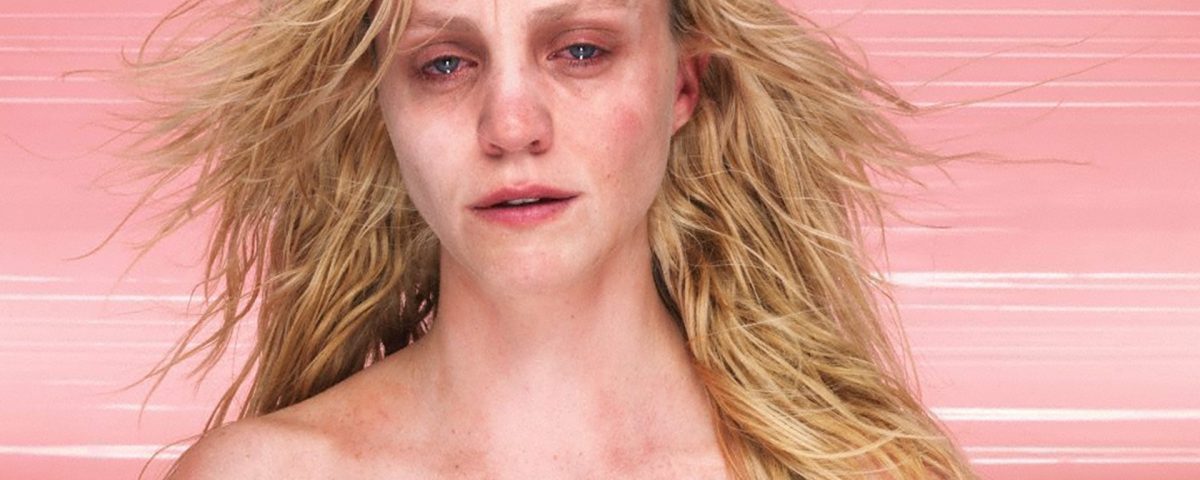
ROSEMARY LAING
22/01/–13/03/2010
DEAD LOSS
She knew, as she transformed the pulped wood on the theatre flat. In muteness, this woman prepared herself. She prepared the surface with a polish of excrement.1
In Rosemary Laing’s new series, a dozen useless actions for grieving blondes (2009), twelve ‘blondes’ are caught in the process of breaking down, iconic types captured in photogenic gestures of crushing anguish. There is no apparent context for this grief, no signs of causality, only transient affects in search of decisive moments. If the images suggest a past, it is perhaps one connected more to a history of images, of media, than a history of individual subjects. Here the aftermath of events are lived as photographic fatalities, where the theatrics of each shot lays bare the signs of emotional fallout, the rhetoric of devastation. Grief by proxy is the ‘useless act’ laboured by these blondes. At times, you want to weep along with them, to take pleasure in the excessive visceral catharsis they offer. But with the frame of reference deliberately withheld, it can feel like you are taking cues from a Greek chorus of contemporary Cassandras.
Laing has often used theatrical gestures and exaggeration in her work as a way of accentuating the mechanics of her subjects’ actions and their photographic translation. This performative tactic is closely aligned to Brecht’s concept of Epic Theatre, which favoured drawing wary attention to the spectacle of representation. Rather than trying to suppress the artifice of the performance, the Brechtian actor sought to ‘alienate’ its viewers from identifying too closely with what their character was experiencing on stage. Instead of encouraging the audience’s trust, it purposefully courted their suspicion of ‘reality-effects’.
Photographically pushing this idea to its pictorial limits, Laing has frequently choreographed flawed or catastrophic performances for the camera, in allusion to our own real-world actions. In her early vampire series swoon (1991–92), the more recent weather (2006), and this current series, performers are presented as casualties of their own gestures. For example, in weather a woman’s body is pulled mid-air into a storm of newsprint. Caught in the chaos of this symbolic ether, her body is overwhelmed by information. It becomes part of the data traffic, enmeshed in the violent flux of its own transmission. In a dozen useless actions the body appears disarticulated from, yet connected to, a synthetic blush of pink which speeds across the plane of each image’s horizon. In an uneasy game of seduction, the relentless flow of intoxicating colour offsets the blondes’ intense distress. Their actions seem arrested in a visual stream of looped consciousness. As if trapped in a televisual holding pattern, each one looks bound to a purgatory of torment. The collision of temporal states—the sense of stillness and movement within each portrait—heightens the stop-motion effect of the sequence. Time feels both photographic and cinematic, past yet strangely present.
This dislocation of temporal flows and subjectivity is an apt metaphor for the way we vicariously engage with mass media depictions of local and international events. As of this writing, at home in Australia the anniversary of “sorry” day has just passed. It is just over a year since the Rudd Government came to power and formally said “sorry” on behalf of the Australian people and parliament, to Aboriginal and Torres Strait Islander families. This was a long awaited apology for a history of state sanctioned laws, which caused Indigenous Australians immeasurable pain and suffering. It was the first time the nation was given official permission to publicly acknowledge, grieve, and share in the history of this country’s trauma. At present, this belief in our ability to begin to affect positive change runs parallel to the global economic crisis, which has seen many countries fall into recession. In Australia, we have just faced the most devastating bushfires on record, where the loss of bushland, homes, and lives continues to rise in the state of Victoria. And in North Queensland, major flooding has recently caused record damage to properties. Our implication in and response to these changing sets of circumstances are ongoing concerns in Laing’s practice.
Natural and man-made disasters have long been a theme in her work. Earlier series such as Natural Disasters (1988) and from Paradise work (1990–92) distilled the common visual language of disaster and beauty into a respective palette of graphic tropes and chromatic gestures. In Natural Disasters, Laing explored the iconography of disaster in a bid to examine the way we have witnessed and rendered our collective memories of the nation’s history. Her Paradise works offered a counterpoint to these concerns, mapping the signifiers of beauty and desire reflected in the promise of everyday consumerism. The later series, one dozen unnatural disasters in the Australian landscape (2003), brought these concerns closer together. In this work, Laing knowingly exploited the picturesque ‘beauty’ of the Australian landscape. Allowing it to travel in close proximity to disaster, she explored the complexities of cultural belonging in terms of Australia’s colonial past and the country’s vision of national identity. In effect, each of these series called attention to the gestural economy of populist images—the way they perform and circulate in conversation with history.
a dozen useless actions speculates, expectably for Laing’s work, on broader cultural predicaments. Navigating the terrain of beauty in the wake of disaster, they extend their explorations of interiority towards the pathology of photography as it relates to the public sphere. Susan Sontag has said, “Beauty is part of the history of idealising, which is itself part of the history of consolation”.2 In Laing’s current work, the consolation of beauty is built on the ruins of idealism. To seek solace in these images is like searching for the sheen of perfection in a polish of excrement spoken of at the beginning
Tanya Peterson 2009
1 Rosemary Laing, unpublished studio notes (1991), unpaginated.
2 Susan Sontag, “An Argument About Beauty” in Dilonardo, P. & Jump,
A. (eds.), At the Same Time (London: Hamish Hamilton, 2007), 12.
